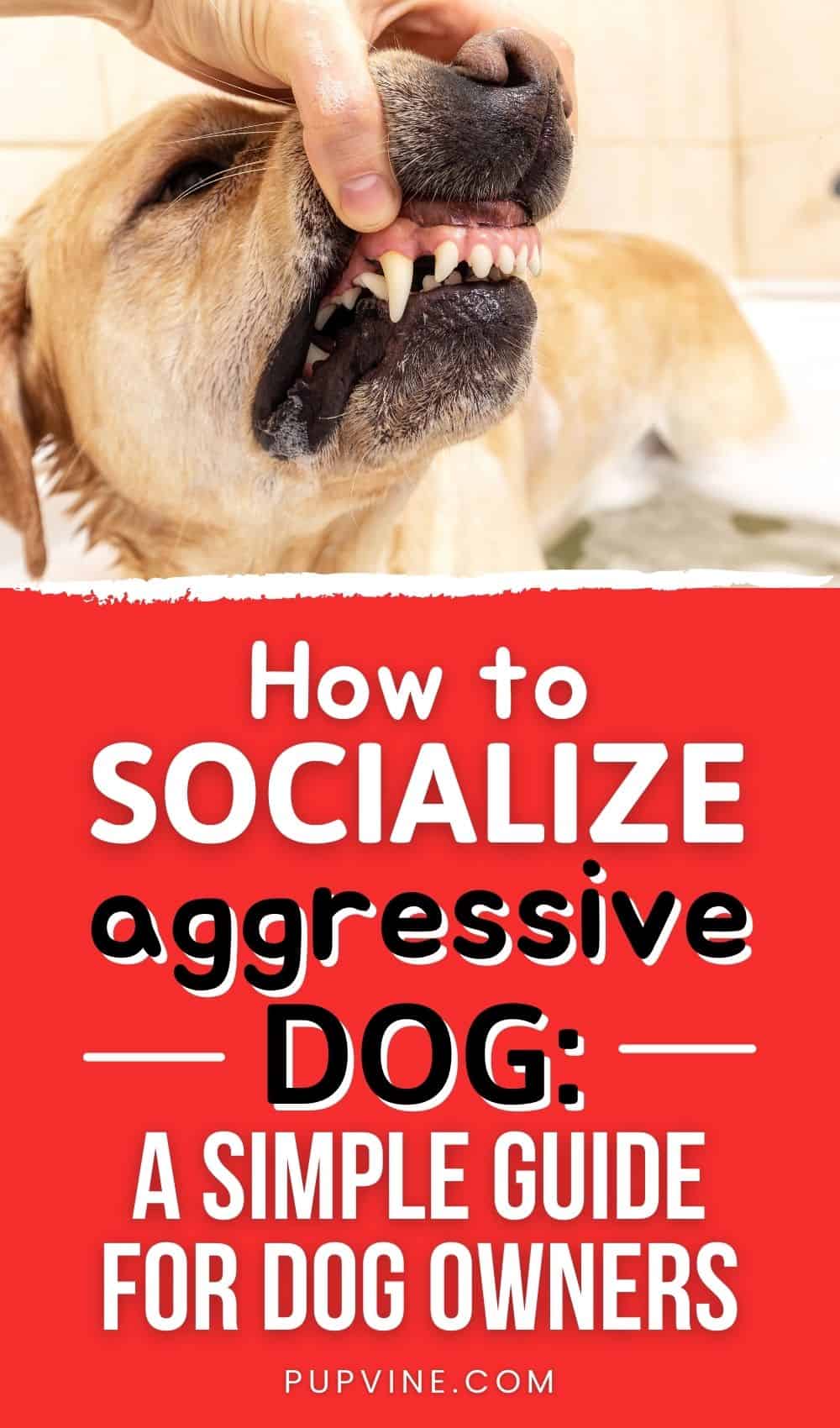Having a dog that reacts aggressively towards other dogs, animals, or people is not easy. You’re afraid he might attack someone every time you go for a walk, and you’re constantly apologizing for his behavior to other dog owners.
Bringing guests over to your house can turn into a disaster. It’s hard to listen to your pup whining when you isolate him in a different room, but if you don’t do it, you risk someone getting bitten.
This article will help you learn how to socialize an aggressive dog and turn your pup into a good boy or girl. You’ll first need to be able to recognize the signs of aggression, which will help you understand what’s causing the aggressive behavior.
The signs of aggression
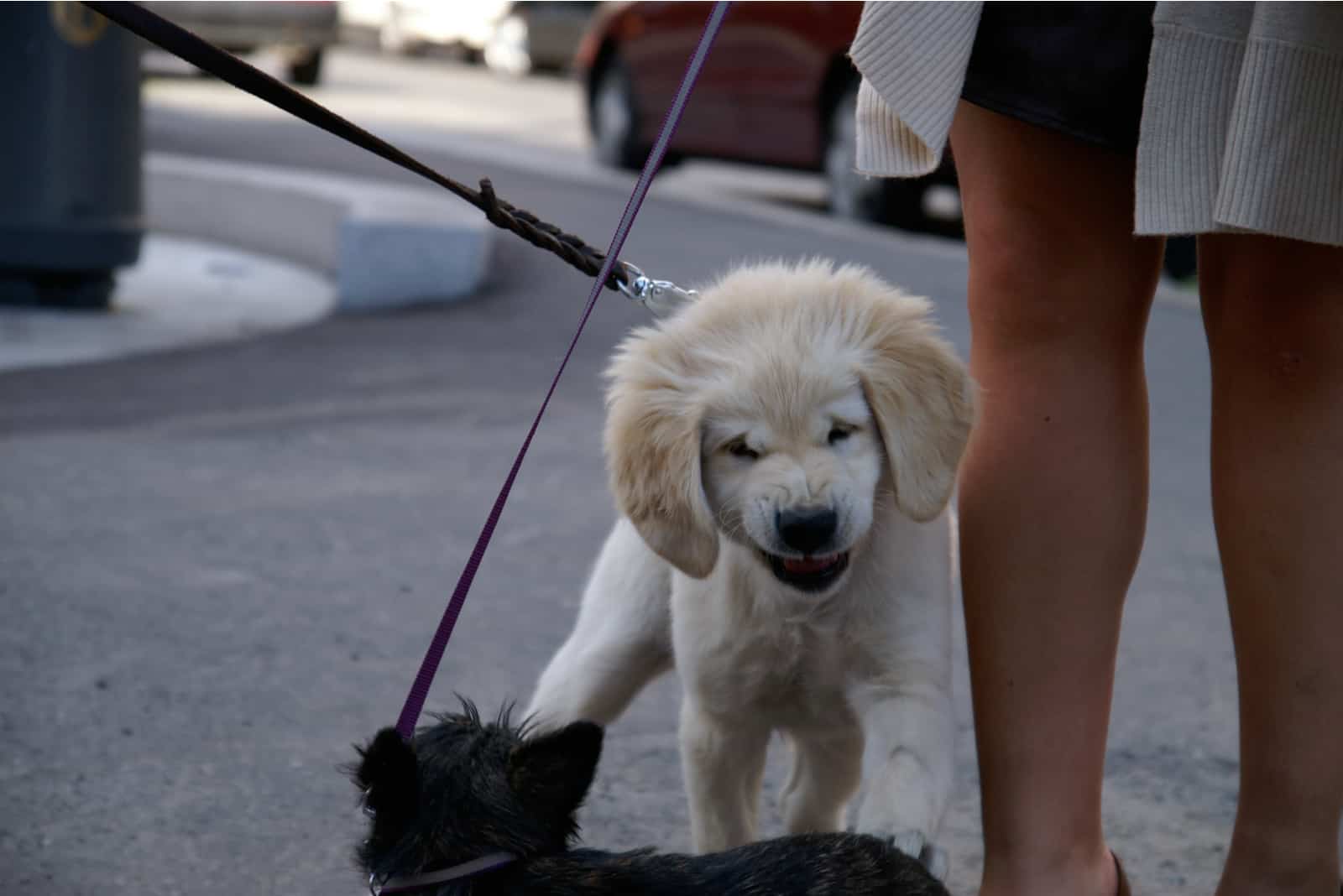
Living with an aggressive dog breed can be very stressful. Even though you know how sweet your pup can be, you constantly worry that he will attack another dog or a person.
When you describe your dog as aggressive, some people imagine an out-of-control dog that never behaves well. However, we know this isn’t the case. No dog is aggressive all the time; they only have aggressive tendencies triggered by some situations, dogs, people, or objects.
Understanding what your dog’s triggers are will help you avoid them or, at least, be more in control when the situation is unavoidable. It’s also the starting point of correcting unwanted behavior.
Aggressive behavior in dogs is any behavior connected with an attack or an impending attack. Dogs never attack gratuitously, and they rarely do it without giving a warning first.
You can anticipate and hopefully prevent aggressive behavior if you closely pay attention to your dog’s body language to see if he’s showing signs of aggression.
The most common signs of aggression are:
1. Avoiding eye contact or giving a firm stare.
2. Yawning or licking the lips.
3. Stiff body posture.
4. Pinning the ears back.
5. Growling and baring teeth.
6. Snarling.
7. Lunging.
8. Snapping.
9. Nipping.
10. Biting.
The causes of dog aggression
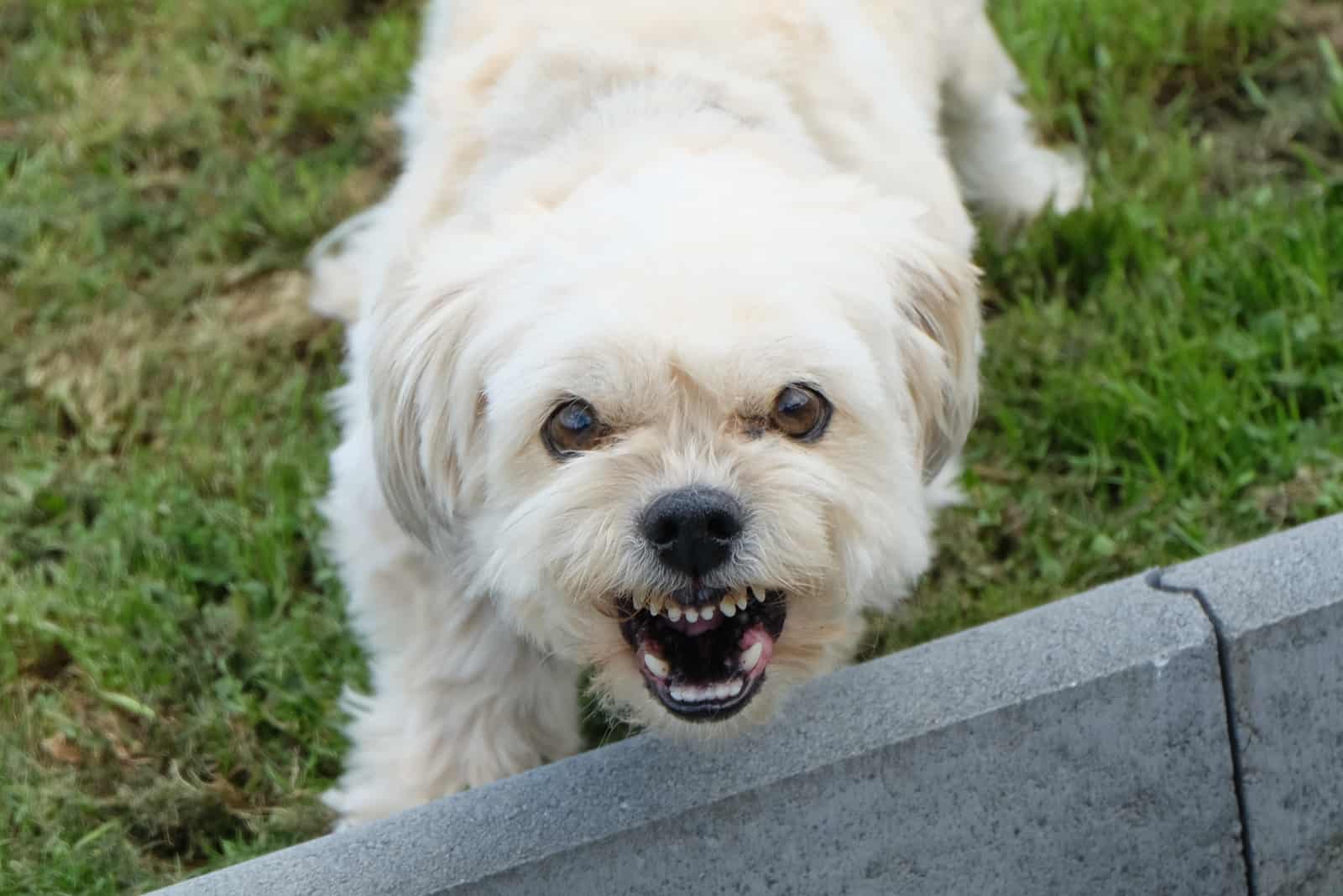
Like we have already said, there’s always a reason behind aggressive behavior in dogs. It can be genetics, fear, pain, or the need to show dominance. To learn how to socialize an aggressive dog, you first need to identify the cause of aggression.
Some dog breeds, like Pit Bulls or Rottweilers, are considered to be aggressive by nature. When you look into the bite statistics in the USA, these dogs do cause more fatalities, but their size, bite power, and image also play a role.
Accepting aggression as a part of a dog’s temperament can only lead to more problems. Dog owners can be lenient when their pups misbehave, thinking it’s just the way they are.
Therefore, you shouldn’t judge a dog by its breed. Many dogs whose breed is labeled aggressive are very sweet-natured. The same is true the other way around; dog breeds that are considered friendly can develop behavior problems.
Dog aggression is sometimes an indicator of health issues. Pain or irritation caused by a medical condition can lead to excessive barking or growling. If your dog suddenly starts acting differently, take it to a vet to rule out any medical problems.
Genetics is an important factor as well. A puppy whose parents had aggression problems is more likely to have them too later in life. When dogs are under extreme stress during pregnancy, they undergo hormonal changes that affect their puppies’ later behavior.
Although nature is important, we can argue that nurture matters even more. In most cases, life experiences are the reason why dogs become aggressive.
Frustration is a common reason behind aggressive outbursts. This is specifically true for dogs that don’t get enough exercise. Dogs that spend a lot of time restrained in a fenced yard or on a leash are also susceptible to frustration-based issues.
A dog’s need to show dominance can result in dog-to-dog aggression. Many dogs resort to growling, snapping, or even biting when they feel their position is being challenged.
Related: Younger Dog Attacking Older Dog: 6 Causes Of Aggressive Behavior
The number one cause of dog aggression is fear. This is particularly true for rescue dogs that have lived in harsh conditions or dogs that didn’t have a chance to be socialized during puppyhood.
Types of dog aggression
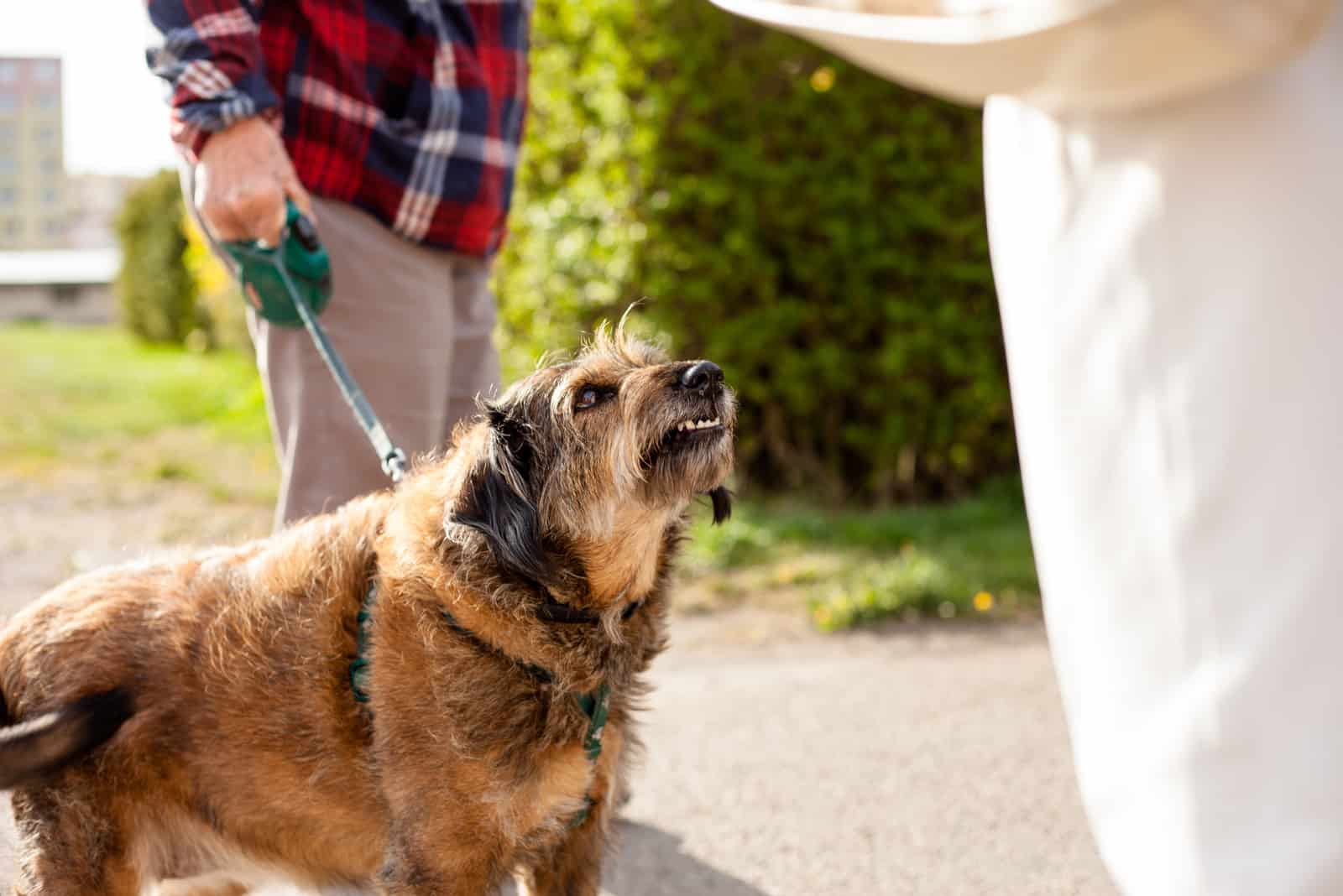
There are different types of dog aggression based on the underlying issues causing aggressive tendencies in dogs. A dog may fall into more than one of these categories, but understanding exactly what is causing his behavior will help you correct it.
The most common are:
1. Possessive aggression.
2. Territorial aggression.
3. Fear-based aggression.
Possessive aggression or resource guarding is when dogs are sensitive to other animals or humans being around their food, toys, space, or owners. To prevent a young puppy from developing this type of aggression in the future, you can occasionally approach them or stay by their side while they’re eating.
Never try to take something from a dog abruptly, even if it’s something they shouldn’t be chewing or playing with. Instead, offer something else they might find more valuable in exchange.
Territorial aggression is similar to resource guarding as it happens because a dog is trying to protect something from humans and other animals.
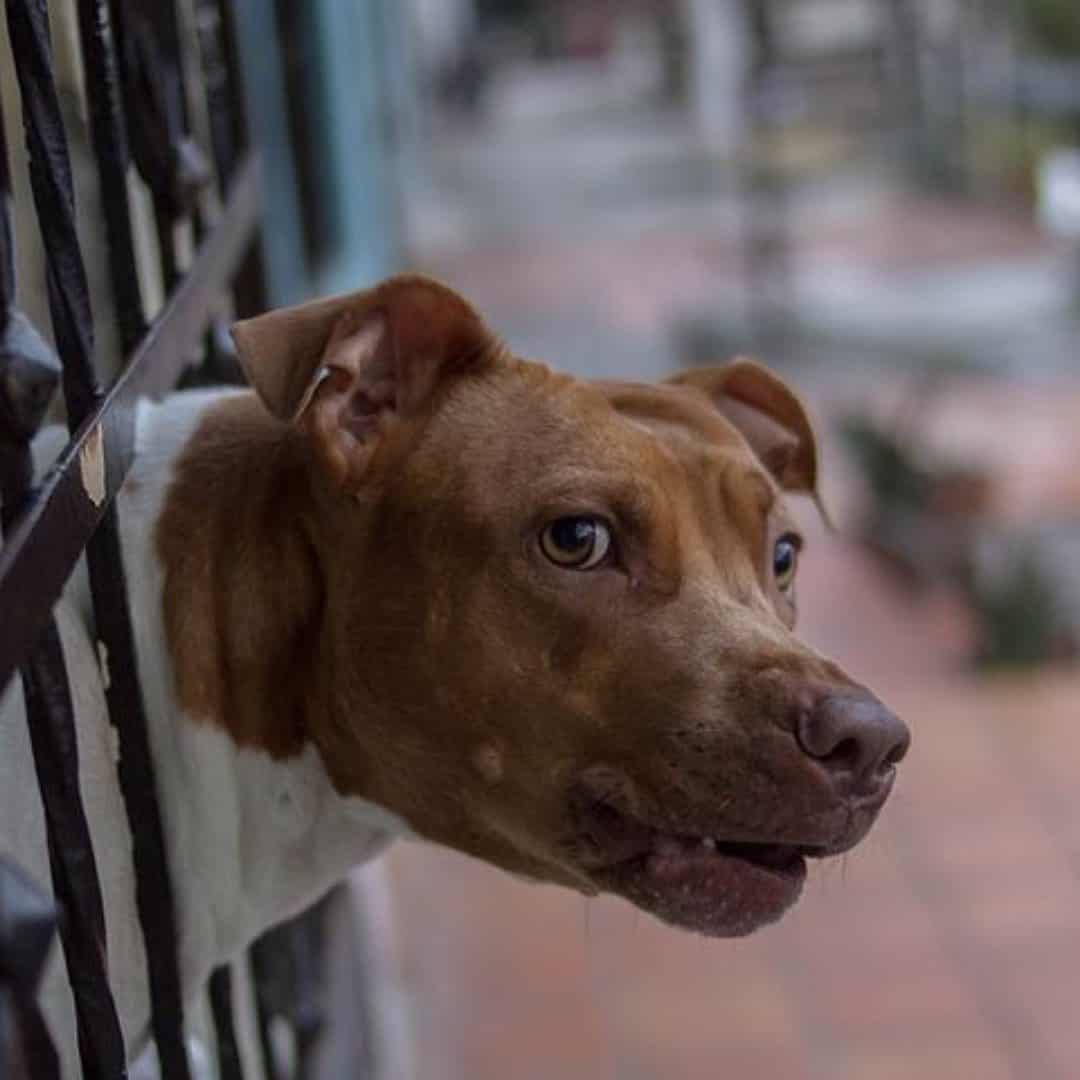
Photo from @epicinjurylawyers
Your dog is perfectly friendly outside, but he goes off at any guests that visit. This is because he sees your home as his territory and the guest as an intruder. One way to deal with territorial aggression is to show your dog that you’re in control as the leader of his pack, so there’s no reason to panic.
Fear aggression is the most common type of aggression in dogs. Fear-aggressive dogs see an attack as the best way to defend themselves. There are many things that a dog may fear, from inanimate objects like vacuums to people in some clothing articles and other animals.
Socializing your dog as early as possible is the best way to prevent fear-based aggression. Dogs that missed out on socialization during puppyhood are more likely to develop this type of behavior. However, if you adopted an adult dog with this type of aggression, our tips on how to socialize an aggressive dog will help your dog overcome it.
Other less common types of dog aggression are control-related or dominance aggression, predatory aggression, sexual aggression, and idiopathic aggression.
Read More: Dog Tail Position Chart
The importance of dog socialization
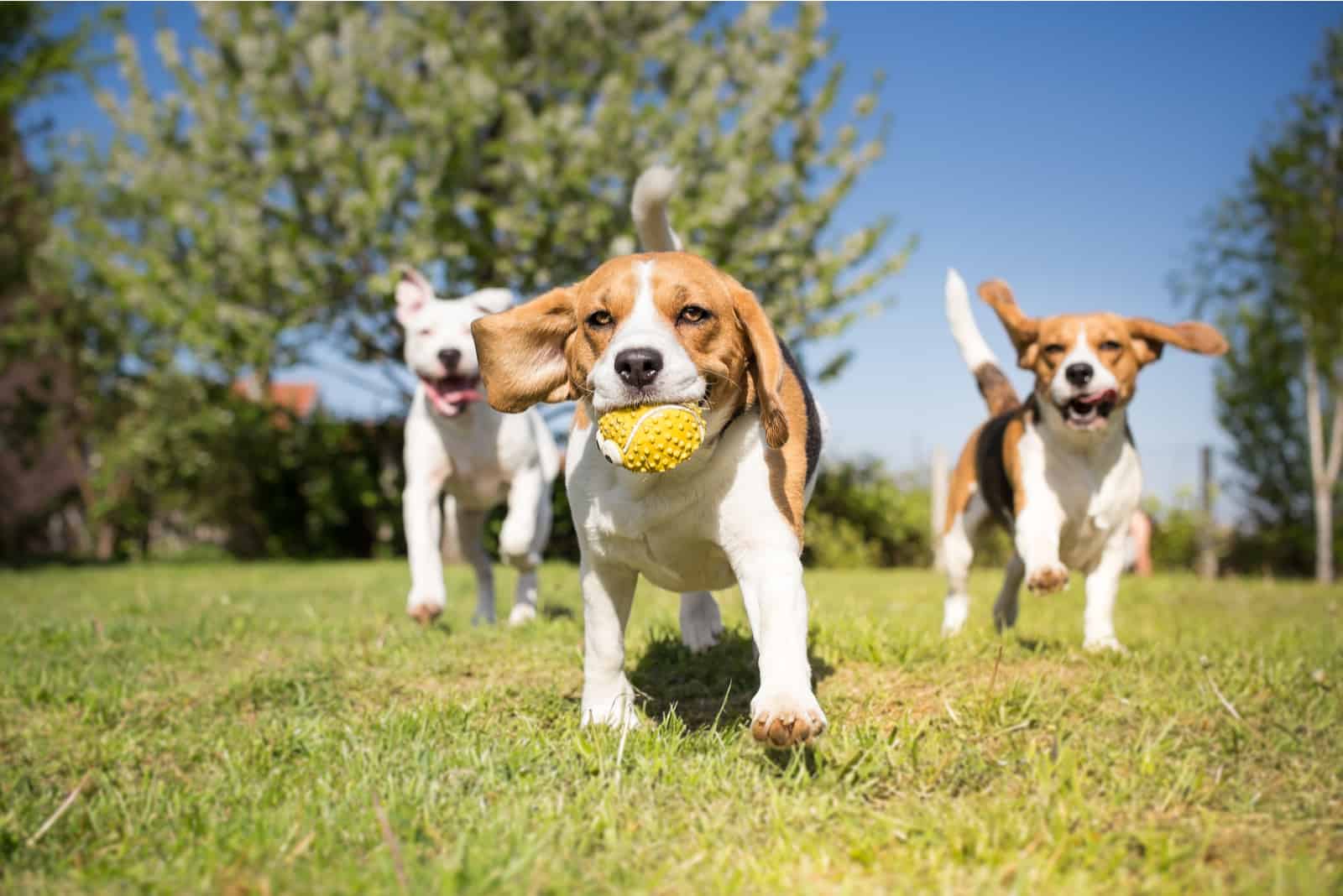
All dog owners have heard the term socialization a million times. But, what exactly does it mean, and why is it so important?
To put it simply, it’s a process of safely exposing a dog to a variety of experiences, animals, and people. It helps pups learn about the world, so they’re comfortable in different everyday situations.
Puppies go through a few phases of development, which have a great impact on their future behavior.
The first phase is the neonatal period. Puppies spend the first two weeks of their lives protected from the outside world by their mother’s warmth and nourishment. Their senses and movement capabilities are still underdeveloped, so they don’t need complex social interactions.
The transition period lasts during the third and fourth weeks of the dog’s life. They become more independent and begin to wander around, exploring their surroundings. By playing with their siblings, they’re starting to learn how to interact with other dogs.
When puppies are between four and 14 weeks of age, they go through a critical socialization period. During this time, they form social relationships with other dogs, different animals, and humans.
Although socialization is most important during puppyhood, it’s a never ending process. It starts from the moment you first bring the pup into your home and lasts throughout their lives.
It’s an essential aspect of dog ownership. When it’s skipped or not done correctly, it can lead to behavioral issues, including anxiety and aggression.
The most common reason why dogs are abandoned in shelters is problematic behavior due to a lack of proper socialization. It’s also the number one cause of death for dogs under three years of age.
By now, you probably have an idea of how important socialization is for dogs. So, let’s move on and explore how to socialize an aggressive dog!
Is it ever too late to socialize a dog?
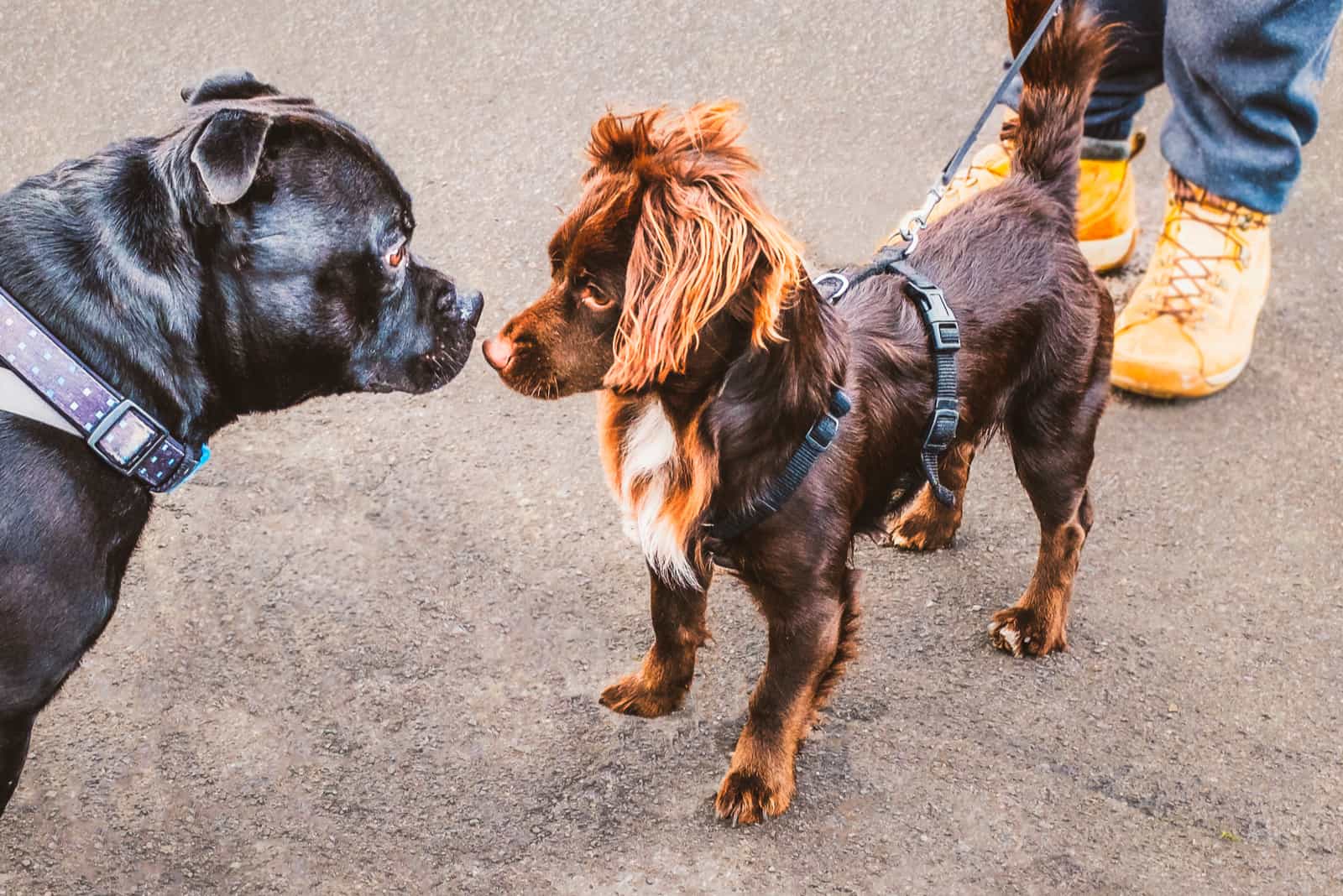
It’s never too late to socialize a dog, though working with adult dogs does take more effort and patience.
Letting puppies learn about the world while they’re still young is always the better option. The moment you notice your puppy won’t stop biting you no matter what you do is a moment too late.
Unfortunately, some dogs don’t have the chance to do that. However, this doesn’t mean they shouldn’t have an opportunity to change the way they see the world and develop good behavior at an older age.
There are numerous touching stories of dogs who completely transformed when they finally found themselves in the hands of loving humans. Many Pit Bulls that were rescued from dogfighting rings are now service dogs helping people in hospitals and retirement homes.
How to prepare for aggression training
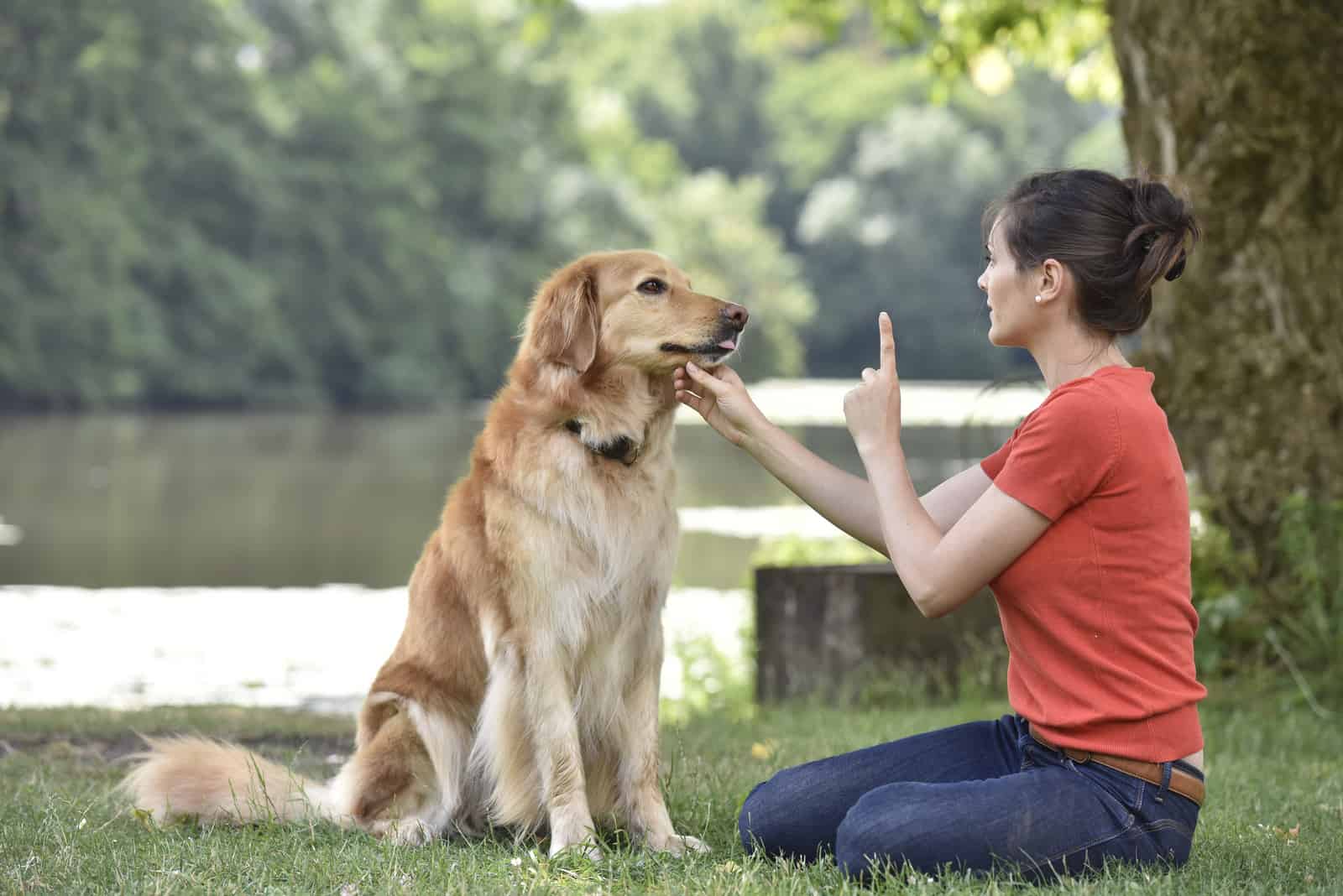
Before you start correcting your pup’s behavior, there are a few things you need to do to prepare.
The first would be to rule out any possible medical problems. We’ve already explained that pain can cause behavioral changes, so you need to ensure that’s not the case for your dog.
The second thing is to check whether your canine’s basic needs are fulfilled. Does he get enough exercise and mental stimulation? Dogs often misbehave due to boredom. If your dog is the active type, then a simple dog walk may not be enough to meet his exercise needs.
Diet can also affect a dog’s mood. You should check if the current dog food you’re using meets your pup’s nutrition requirements.
Diet can also affect a dog’s mood. You should check if the current dog food you’re using meets your pup’s nutrition requirements. Some human foods that can help you supplement your dog’s diet with necessary nutrients include brussels sprouts, guava, edamame, jasmine rice, and basil.
As socializing a dog means letting him interact with different people and animals, you’ll need to ensure the safety of everyone involved beforehand.
For pet owners whose dogs are aggressive toward people, putting up baby gates around the home is a good way to keep the dog from harming guests or family members.
Muzzle training is another essential safety measure, which prevents dog bites. Teach your pooch that wearing a muzzle is a positive experience, not a punishment.
You should also teach your dog basic obedience commands, including sit, down, come, focus, and touch. These will come in handy if you find yourself in unavoidable situations.
Dogs can’t multitask, so giving them something else to do when they start acting out can help you regain control and get them to calm down.
If your pup starts barking at another dog, shift his focus onto yourself and tell him to sit or lay down and give him a treat.
Once you’ve got these basics down, you’re ready to learn how to socialize an aggressive dog.
How to socialize an aggressive dog
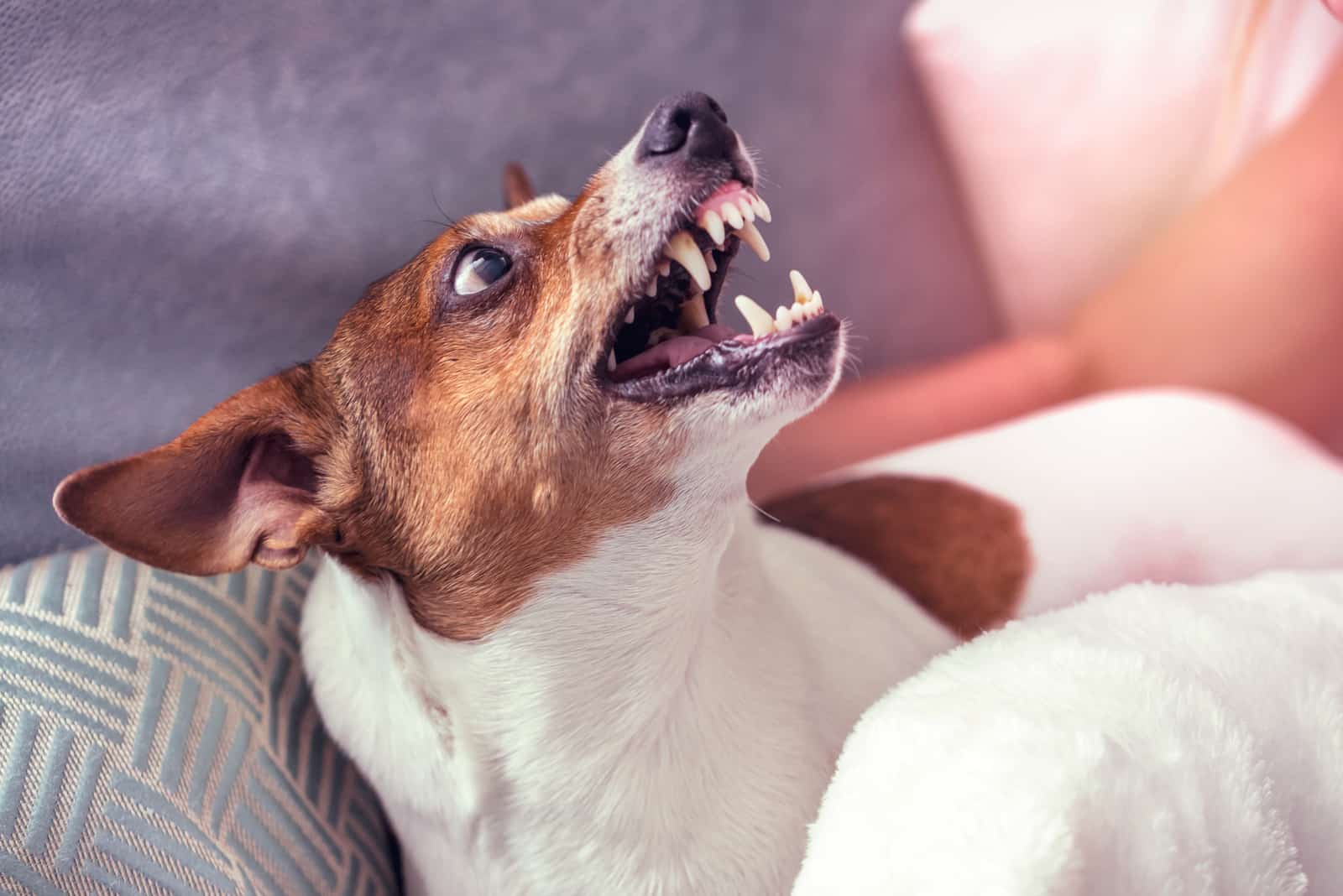
Socializing an aggressive dog takes a lot of hard work, but it’s necessary for both the dog’s safety and the protection of those around him. Whether you’ve brought home a new puppy from the breeder or adopted an older rescue dog, this guide will hopefully help you address any current or future aggression issues.
The best training techniques for correcting aggressive behavior are desensitization and counterconditioning.
These techniques need to be used together to be effective. The process of desensitization involves exposing a dog to the source of fear at a distance or an intensity where it doesn’t invoke an aggressive reaction.
Once the dog is comfortable, you start slowly reducing the distance, and after some time, you get to the point where your pup doesn’t respond even when he’s facing his fear head-on.
Desensitization on its own helps a dog see a scary situation as a neutral one. When it’s coupled with counterconditioning, dogs start making positive associations with things they used to fear.
The first step in this process is to make a list of your pup’s triggers. You should pay attention to his body language to see what sets him off.
Once you know the causes of your dog’s aggression, you’ll need to figure out what his threshold is. How close does he have to be to the thing that scares him to start reacting?
When you’re aware of your dog’s triggers and thresholds, you can start planning the encounters.
The key is to take baby steps and always carry lots of treats with you. If the dog is afraid of people, start by introducing him to your family members one by one. Once he’s comfortable being around someone other than you, you can let him meet more people.
There are two methods based on counterconditioning that have proven to be effective for aggression training; the Jolly Routine and the Open bar / Closed bar method.
The Jolly Routine

The Jolly Routine is a behavior modification technique designed to change a dog’s emotional response to stimuli that cause aggressive reactions. With this method, you’re using your mood to change how the dog sees the object of his fear.
Here’s how it works: If your dog is afraid of bicycles, then every time you see a bicycle during a walk, you start acting jolly or silly. For example, you can use a high-pitched tone to talk to your pup. You can also sing or laugh… whatever suits you better.
Once the ‘dangerous’ bicycle is out of sight, you go back to acting normal. This way, your dog will associate your positive attitude with the object he fears and start to perceive it differently.
If you’re too embarrassed to act silly in public, then you can try the other method.
Open bar / Closed bar
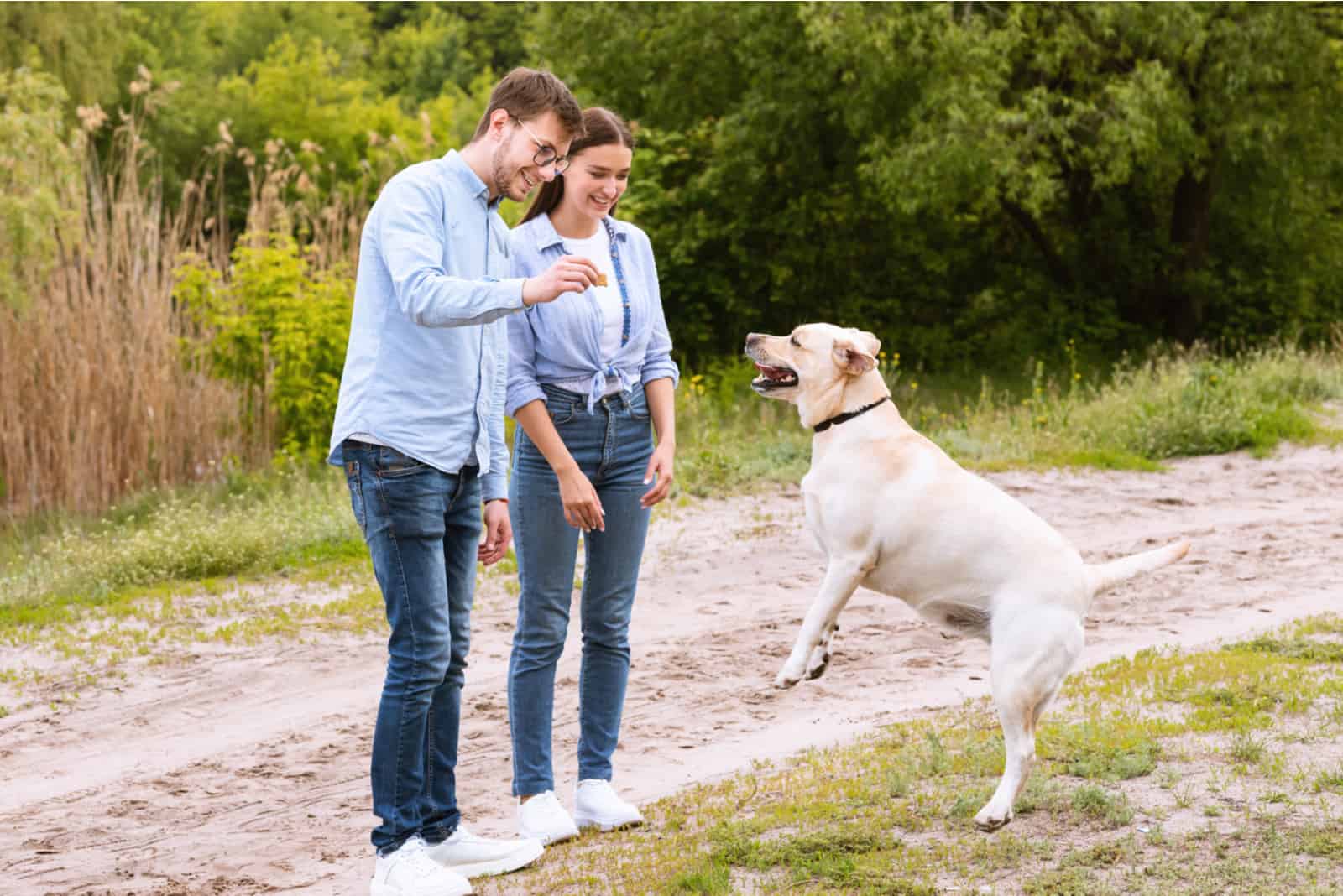
The Open bar / Closed bar technique is similar to the Jolly Routine, but instead of acting silly, you give your pup special high-value treats when he encounters something he fears.
The treat needs to be something he really enjoys and doesn’t get to eat often. You start giving them treats when they notice the stimuli and stop when it’s out of sight. Always treat your dog regardless of his reaction.
Some owners fear that they’re rewarding bad behavior by doing this, so they only give treats when the dog behaves well.
This is a mistake as your pup will only make a connection between the special treatment and the object if it happens every time he encounters it.
The Open bar / Closed bar is a variation of the LAT (Look At That!) training method, which emphasizes the dog’s visual experience. With this training technique, you systematically expose your dog to the scary stimuli while using tasty food to change his emotional reaction.
How to socialize an aggressive dog with other dogs
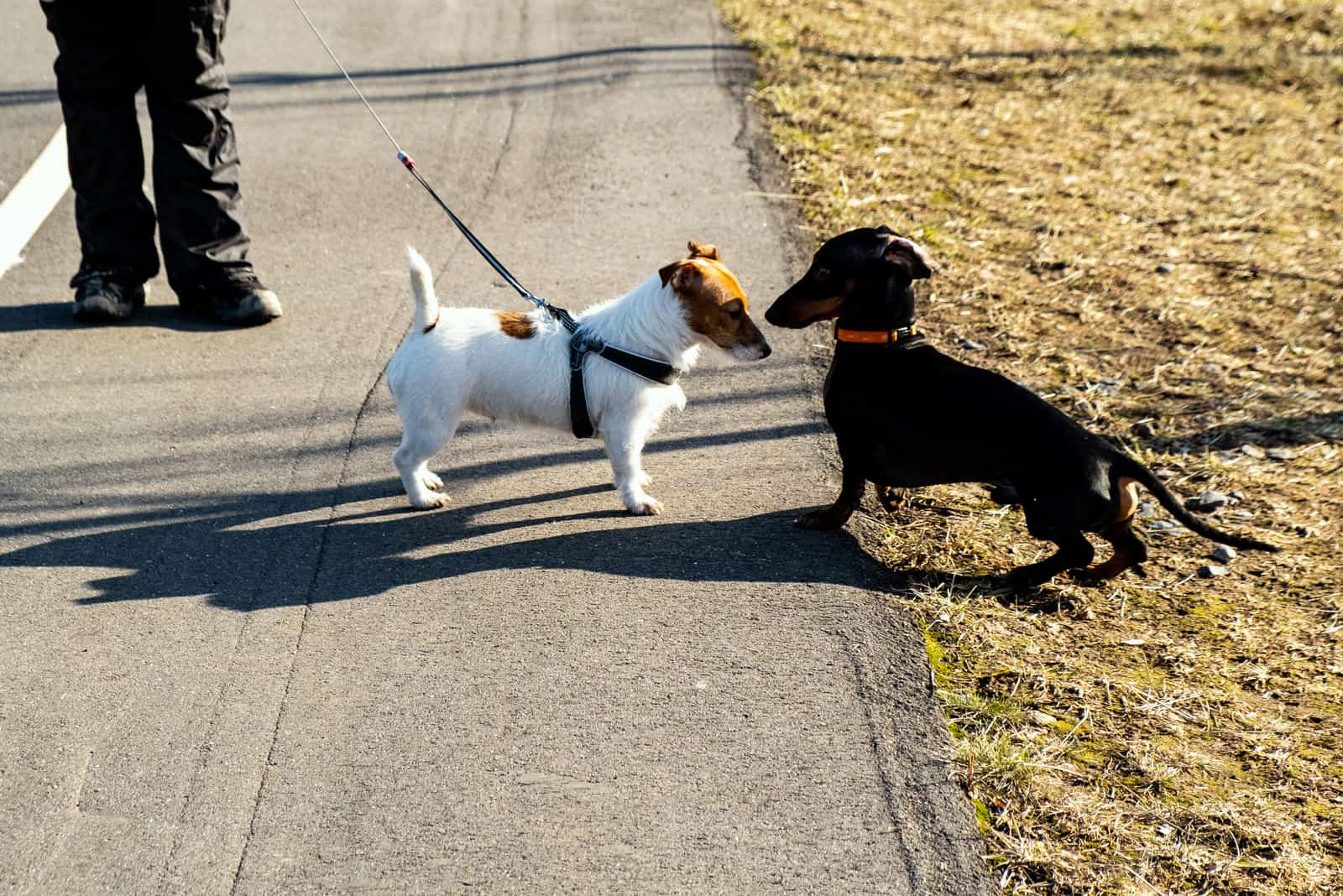
Many dog owners hate taking their pups out for a walk because they constantly fear their lovable pooches might attack another dog. If you’re one of those owners, these tips will help you solve the problem.
If your dog lunges at other dogs, then taking him to a dog park is not a good idea. Let him see other dogs from a safe distance at first while using positive reinforcement to reassure him.
For example, you can start by inviting a friend with a good-natured dog for a walk. Don’t force your pup to greet the other dog right away, but walk together at a distance. Once your puppy relaxes and stops showing signs of aggression, you can safely introduce them.
When you repeat this with enough different dogs, while using positive reinforcement, your puppy will see that nothing bad happens when there are other dogs around, and eventually, it will stop fearing them.
You can do the same with your pup’s other triggers, whether it’s bicycles, car rides, or loud sounds.
Never push your dog too hard; respect his pace and reward him continuously, even when he barks or growls.
It’s also important to remember that you need to give the treat a few seconds after he encounters something he fears. If you wait too long, the dog won’t be able to make a connection between his action and the reward.
How to socialize an aggressive puppy
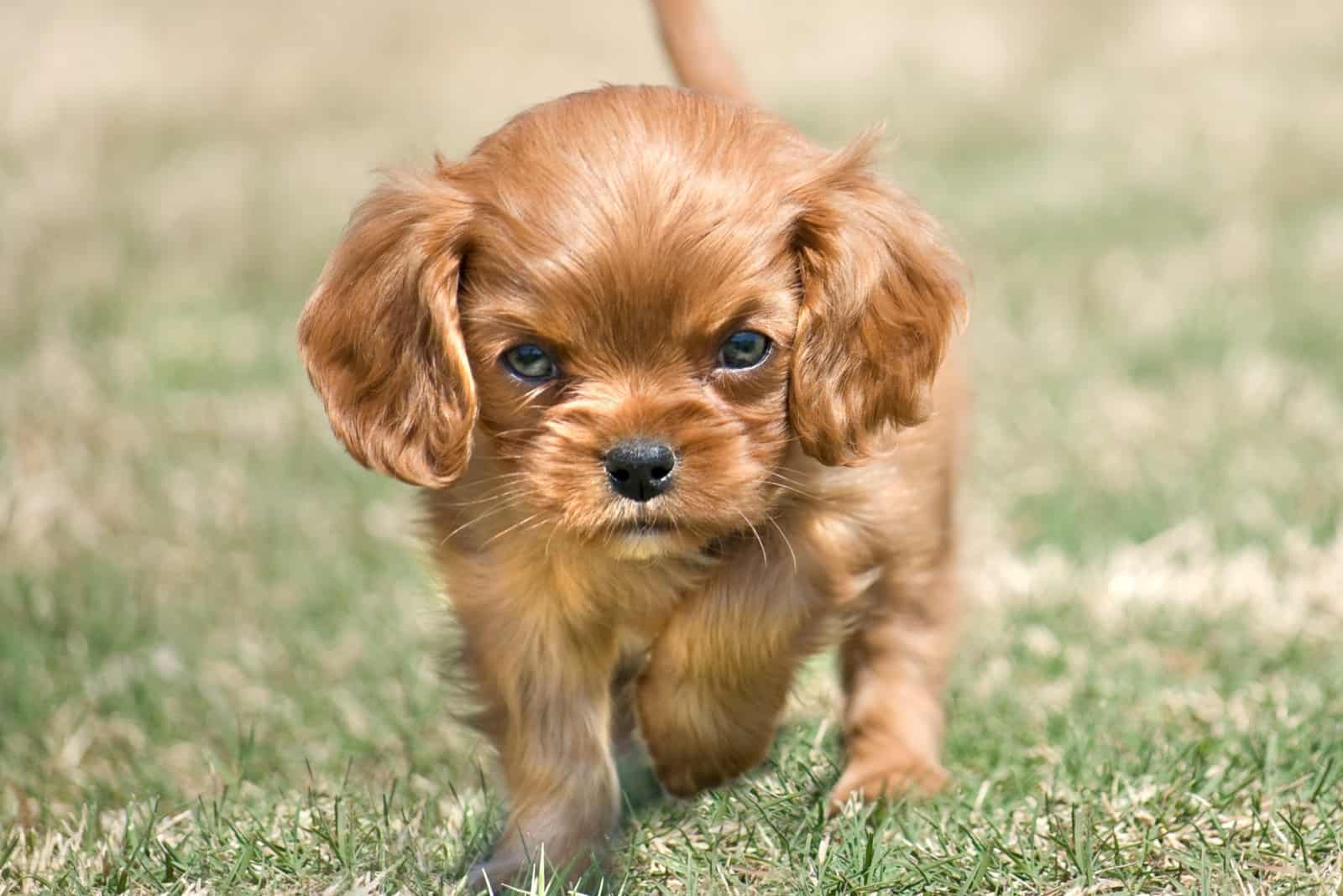
You’ve brought a new puppy home, but he’s showing signs of aggression. Don’t worry; correcting a dog’s behavior is easier while they’re young.
There are a few reasons why a young puppy might have aggressive tendencies. Dogs are ready to leave their mothers at about eight weeks of age when they have already learned some social skills through interacting with other pups and humans around them.
However, in some cases, puppies spend this period in isolation from other dogs or humans. For example, puppies with parvovirus are isolated so they won’t transmit the virus to other dogs. Once they’re ready to be reintroduced to the dog society, they might be wary of other pups.
Another example is dogs that don’t have any contact with humans in the early stages of their lives. This usually happens when stray female dogs keep their puppies away from people to protect them.
When these puppies are rescued and adopted, they can see humans as a scary new species and use aggression as a defense method.
The first step in socializing aggressive puppies is building a strong connection with them. Show your new puppy that they can trust you to keep them safe. Once you’ve gained their trust, you can continue to correct the negative behavior.
The next step is to figure out the underlying issues causing aggressive outbursts. Does the puppy only act out around certain people or in certain situations? Do they have a problem with all or only some dogs?
When you know what’s causing the aggressive behavior, you can create a plan to fix it. Slowly expose your puppy to the source of his problem while using treats, praise, and toys to help make positive associations with it.
It’s the same process we have explained above. However, as your dog is still young, you also need to keep getting him used to things he doesn’t yet see as a problem. Bring him around with you to meet as many different people and animals as possible.
Make sure he’s comfortable in different environments, especially if you’re planning on travelling with your pup in the future. Giving a puppy some alone time during the day will help prevent separation anxiety from developing later on.
You can also enroll your puppy in a doggy daycare or in basic obedience school. This gives him an opportunity to play with other dogs under the supervision of a trainer.
How to socialize an older dog
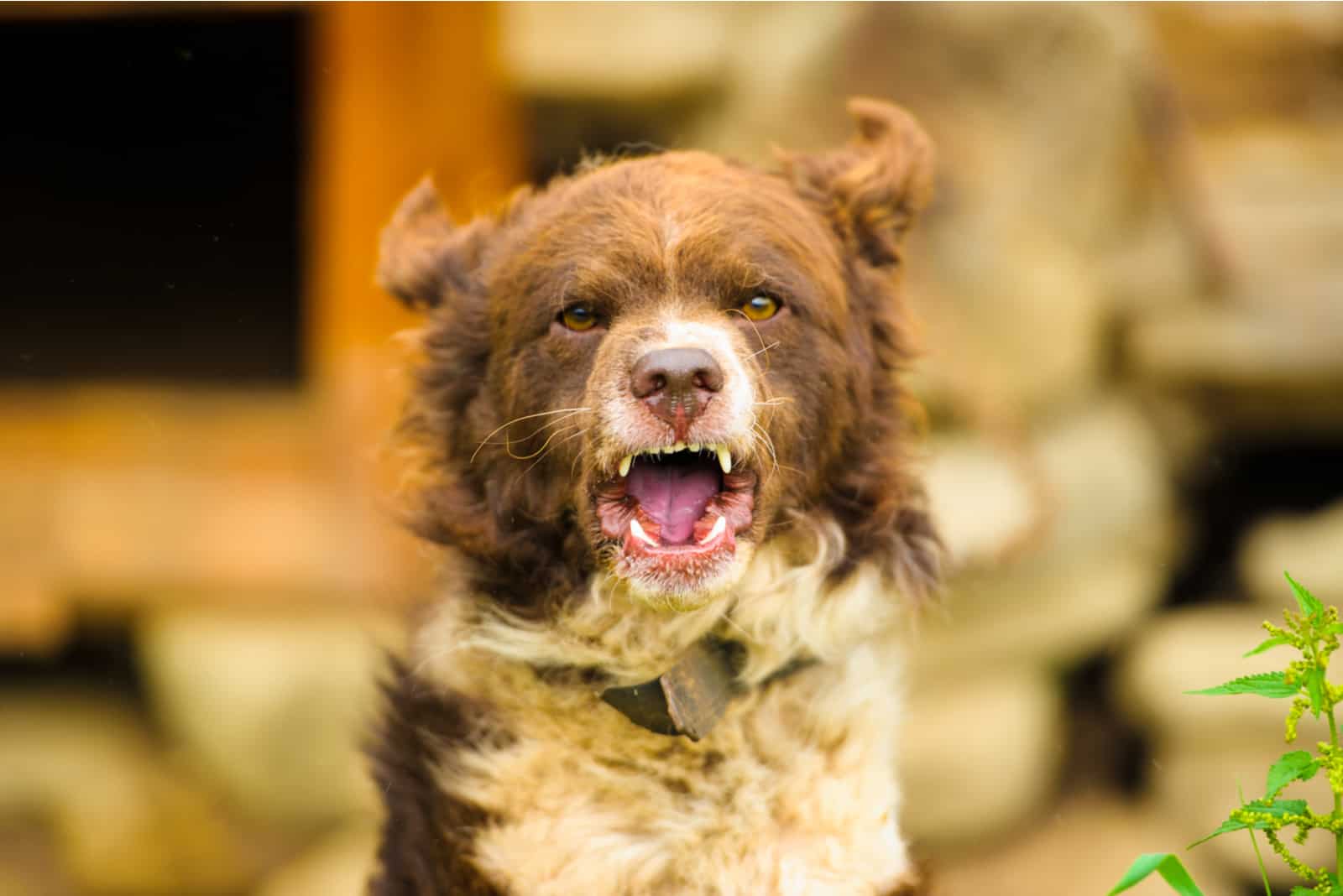
Many dogs that end up in shelters go through numerous bad experiences during their lives, from dog fights to abusive or neglectful owners. Adopting a rescue dog is challenging, but the love received in return is worth it.
An adult brain is less flexible, so it takes more work to reshape an older dog’s behavior. They may have skipped the critical socialization period, but socializing an adult dog is not impossible.
Your patience and effort will help them address their fears and anxieties and change their perception of the world.
You don’t need to go through this alone, especially if you’re a first-time owner. Hiring a professional dog trainer or an animal behaviorist will help both you and your pup deal with the situation better. Take a look at our advice on where to surrender an aggressive dog.
However, your role is still essential as your new dog will need to go through the slow process of systematic exposure to his fears.
The best advice we can give you is to respect your dog’s pace and keep calm in every situation. Getting angry or frustrated will only make things worse. Your pooch may need weeks or even months to adjust, but he’s got you there to help.
You can also enroll your dog in a growl class. These classes are specifically designed for correcting the behavior of aggressive dogs; teaching them how to interact with other dogs in a controlled environment.
In conclusion
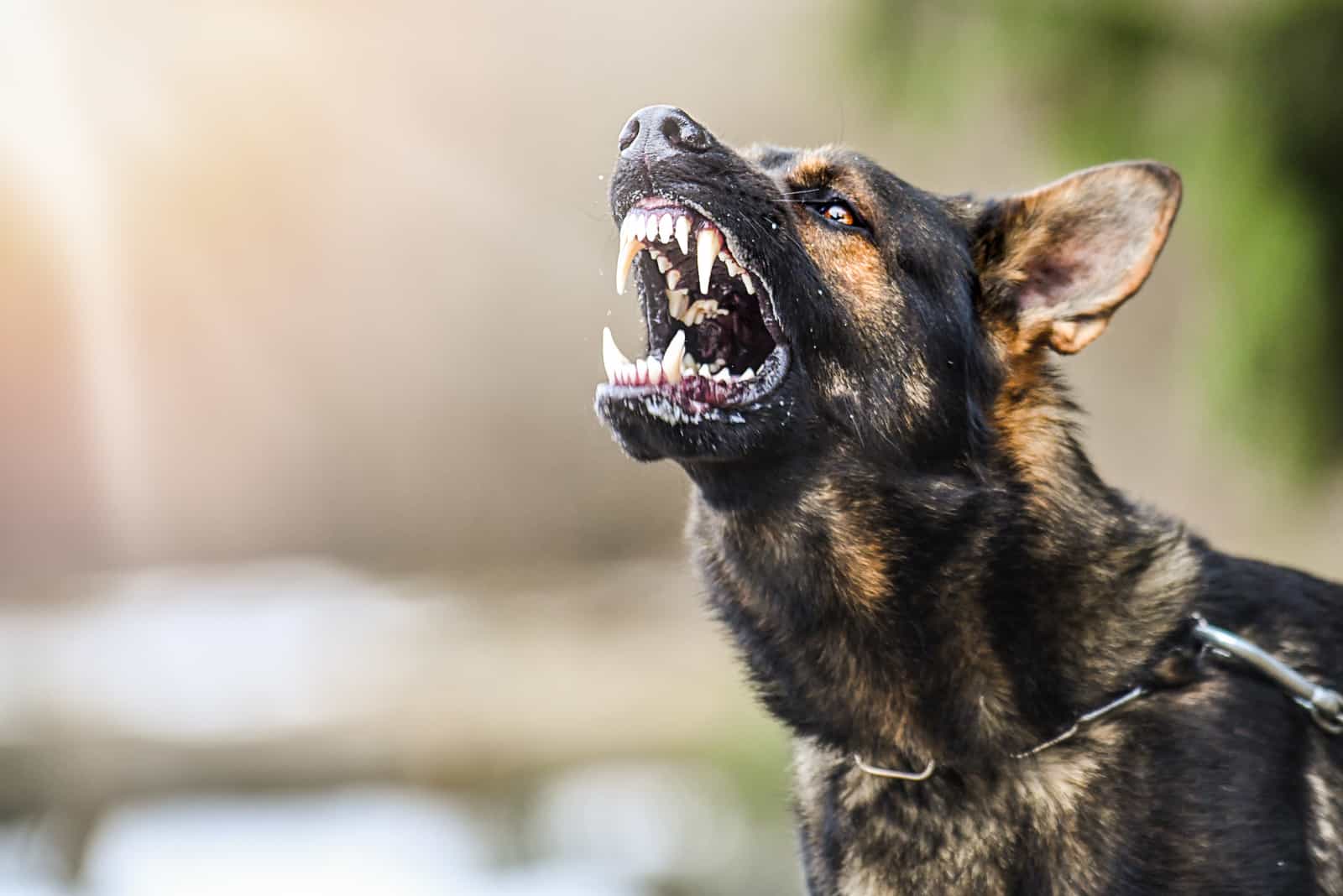
There’s always a reason behind a dog’s aggressive behavior, whether it’s genetics, frustration, defense, or fear. The first step in correcting this behavior is understanding what’s causing it.
The majority of dogs resort to aggression out of fear, and most of the time, it’s the result of negative life experiences. There are numerous things that a dog may perceive as scary, from bicycles to people in hats or small dogs.
Your pup may act aggressive only around male dogs or only when he encounters specific objects. If you pay attention to your dog’s body language, you’ll be able to notice what his triggers are.
Whether you brought home a new puppy or you adopted an adult dog, the process of correcting the aggressive reactions is the same.
Once you list out your dog’s triggers, you’ll need to determine what his threshold is. In other words, you’ll need to know at what distance your pup starts reacting to the object of his fear.
With proper safety measures in place, you can plan out encounters with new scary things. During these encounters, you need to use positive reinforcement to change his emotional reactions.
The best methods are the Jolly Routine and the Open bar / Closed bar technique. With the Jolly Routine, you use your mood to influence your dog’s mood, whereas with the Open bar / Closed bar method, you use special high-value treats.
Hopefully, with enough time and repetition, you’ll start to see a change in your pup’s behavior. The most important thing is to stay calm and positive no matter what as getting frustrated can only make the situation worse.
If you’re not confident that you can deal with the situation on your own, don’t hesitate to ask for help from a professional dog trainer. There are also specific classes designed to help socialize aggressive dogs with other dogs, so ask around to see if there are any in your area.
Don’t be embarrassed when your pooch acts out; you’re not alone in this. Countless dog owners have the same problem.
Be patient with your pup as you’re the person he trusts the most. It may take a lot of time and hard work, but both your lives will be less stressful in the end.

